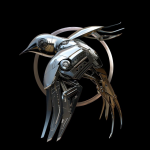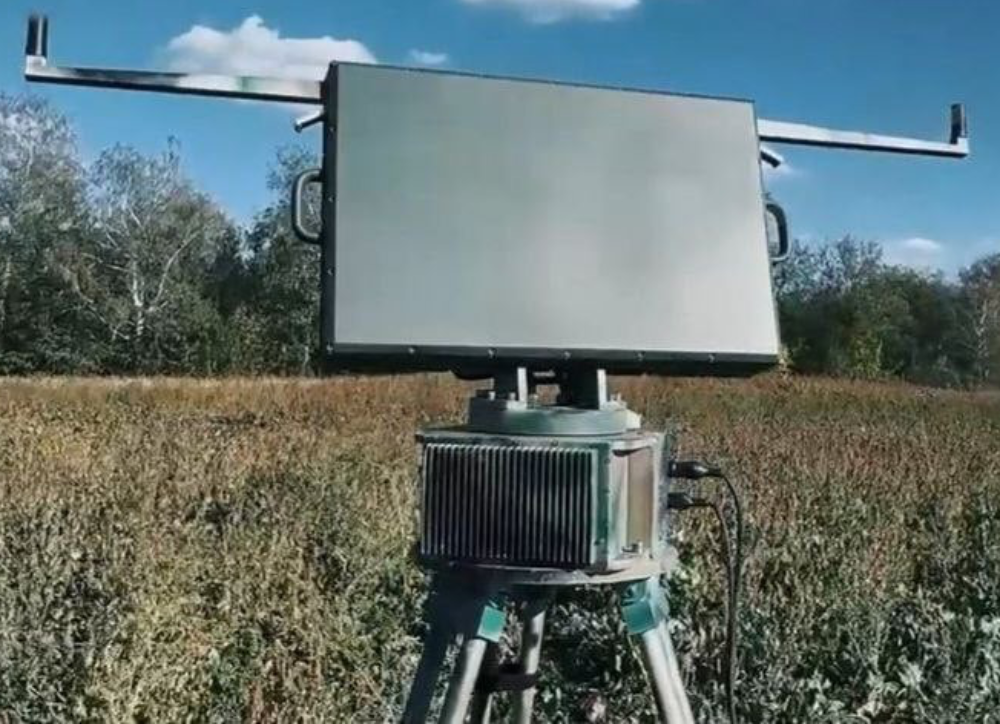
Ukrainian USF vs Russia’s Rubicon: Drone Warfare Evolution

Since June 2025, Robert “Madyar” Brovdi has led Ukraine’s Unmanned Systems Forces (USF). He built an entire ecosystem inside the Armed Forces, and now he is actively scaling that positive experience. Under his leadership, drones have become not just tools of war, but a symbol of ingenuity and resilience that defines Ukraine’s modern battlefield.
In many ways his work embodies the Drone Warfare Evolution — turning ad-hoc units into a coordinated, strategic instrument that operates at the tactical, operational and strategic levels. Madyar is one of those thanks to whom the Ukrainian Army adapts faster than any modern army, rewriting the rules of modern warfare in real time.
So, what about our drones?
Here are several figures vividly showing USF work:
12 units of Unmanned Systems Forces Grouping constitute 2.2% of total Defense Forces of Ukraine strength. In September 2025, USF struck 35.4% of all targets (23,532 of 66,537 confirmed) and eliminated 36.7% of Pidars¹ (6,659 of 18,159 confirmed). Stunning — 2.2% of USF fighters take out more than a third of Pidars and their equipment! And that’s not all.
Here’s the list of military targets on the swamps struck in September 2025, with USF participating:
- Slovyansk oil refinery (03.09), USF
- Luhansk oil depot (04.09), USF
- Ryazan oil refinery (05.09), USF jointly with GUR, SOF, other Defense Forces components
- LVDS “8-N” (06.09), USF
- Pumping station “Vtorovo” (07.09), USF
- GPS “Shilovo-3” (07.09), USF
- Kirishi oil refinery (14.09), USF, SOF
- Nizhny Novgorod oil refinery (16.09), USF, GUR
- Joint POL warehouse Southern Military District, Dzhankoi (16.09), USF
- Novokuybyshevsk oil refinery (20.09), USF
- Saratov oil refinery (20.09), USF and another Defense Forces component
- Astrakhan GPP (22.09), USF
- LVDS “Samara” (23.09), USF
- Novopskov pumping station (24.09), USF
- GRS “SHCHASTYA” (24.09), USF
- GRS “SIVERSKODONETS’KA” (25.09), USF
- “EuroChem-Belorechensk Fertilizers” (25.09), USF
- Afipsky oil refinery (26.09), USF
- Astrakhan GPP (27.09), USF
The Drones Evolution Plan
Plans for the near future also please me:
Priority task of USF: increasing USF personnel to 5% of total Defense Forces of Ukraine strength; closing a single drone line along the entire front with application at tactical, operational, and strategic levels; achieving 50% share of all enemy targets and enemy manpower strikes (reaching this indicator within 5 months — by 03.03.26).
From journalists and “armchair Rambos” I’ve read much criticism that chasing each Pidar with drones is impractical and costly. This is incorrect and harmful thinking. The foundation of foundations of the Red Army was and remains unchanged — meat. The Pidars Army is a descendant of the Red Army. No equipment works without meat. Therefore, meat must be destroyed first. And it’s not as costly as it seems.
Let’s Calculate
Currently in Ukraine, the Pidars grouping is approximately 700,000 heads. Take 3 drones per one. This is with reserve, though current real USF effectiveness is 45-50%, meaning maximum two drones per pidar. But take with reserve — three. Results in 2,100,000 drones, total cost 42,000,000,000 hryvnias, or slightly more than a billion dollars. Is this really a big price for such a result?
What About Orcs’ Drones?
Back in 2024, Pidars got “Rubicon,” which now very much gets on our nerves. “Rubicon” isn’t some one official brigade, but the name of a center and related units dealing with unmanned systems on the swamps at tactical, operational, and strategic levels. Here’s what Serhiy Flash, one of the experts in Ukrainian radio reconnaissance, says about “Rubicon”:
It’s no secret that the key role in our retreat on Kursk direction was played by enemy actions knocking out our logistics channels with drones. The enemy did this actively and accurately. Practically all this work was performed by ‘Rubicon’ unit crews. After Kursk operation, part of Rubicon crews remain on Sumy direction. They’re now attacking our rear at 20-30 km depth.
Here’s more. The enemy responded to our anti-aircraft drones’ success by increasing production of their wings. Purely Russian approach: If Ukrainian air defense shoots down a large percentage of missiles, Russians need to launch more missiles. If Ukrainian anti-aircraft drones proved effectiveness, Russians need more drones. But it works.
Rubicon Structure and Threat
The Rubikon Center for Advanced Unmanned Technologies was created in summer 2024, though the first public reports appeared in October 2024. The center operates under personal supervision of Russia’s defense minister and has high priority in supply and staffing with selected personnel. The center has this structure:
- Center for developing unmanned systems and robotic ground complexes
- Center for training instructors to teach military personnel application of innovative unmanned solutions
- Analytics Center
- Combat units
Combat units work with all UAVS types:
- Strike UAVs like Lancet and Molniya (Flash)
- Anti-aircraft drones
- Fiber-optic drones
- Long-range FPV drones
Separate specially trained groups work against our pilots.
They often use the tactic of multiple drones flying simultaneously at one target. They work at long distances through repeaters. Attacks on roads Kramatorsk-Dobropillya, Pokrovske-Iskra, Pokrovsk-Petropavlivka are their handiwork. (And now Kharkiv-Slovyansk too).
Our reconnaissance identified pidars from “Rubicon” through OSD as RUBK, but most often Rubicon doesn’t want to reveal itself and flies as VT40.TT, FIRE, ACTA NON VERBA, SUDNY_DEN, VT40.GLADIATOR.
Rubicon Goes Maritime
“Rubicon” took unmanned strike boats into service. Conducted training, worked out scenarios. Working on improvements. There’s also a submersible boat. Also, “Rubicon” deals with technologies for detecting our BEKs² from air and destroying them. The main task they name is strikes on our maritime infrastructure. But just in case, European countries should prepare in advance for the appearance of “unknown” sea drones.
I’ll write more clearly. Elite unmanned systems center “Rubicon” can attack (by analogy with “Shaheds”) in one day, for example, with 400 boats (underwater, surface), all ports, towers, ships, all maritime infrastructure. Even “fly out” with boats to beaches with fragmentation ammunition. Are we ready for this?
The Drone Warfare Evolution Threat
Rubicon became a huge threat to our pilots and operators. Its separate structure systematically deals with developing tactics and strategies to counter our USF, and implements its developments on the battlefield. Unfortunately, our losses of pilots and operators substantially increased after Rubicon’s appearance.
A year hasn’t passed, and Rubicon is pulling the line of contact with radars against drones. Rubicon now uses radars from Chinese company Zhejiang Fanshuang Technology. They have three action radii — 5, 10, and 20 km, price per radar from $220,000.

Once again I state: Orcs learn from us, then through systematic state work scale and develop our experience, and eventually surpass us. But it should be the opposite. We should scale and spread our positive experience, and on its basis create new technologies.
This is drone warfare evolution in real time — Ukraine’s 2.2% achieving 35% results, while Russia’s Rubicon systematically copies, scales, and weaponizes every Ukrainian innovation. The question isn’t who invented drone warfare. The question is who will dominate.
¹Pidar (pronounced “pidar”) — a common Ukrainian derogatory word for Russian soldiers, roughly meaning dirty scumbag.
²BEK — (Ukrainian abbreviation for “БезЕкіпажний Катер”, literally “uncrewed boat”). A Ukrainian surface naval drone used primarily for reconnaissance and strike operations.
Related posts:


Strike Military Plant in Cheboksary: Kometa Modules halted
Ukrainian drones delivered a strike on military plant in Cheboksary on the night of November 26. The Unmanned Systems Forces (USF) hit the VNIIR-Progress facility. This plant produces [...]
Ukraine hits Taganrog aircraft repair plant
Independent sources report that Ukraine hits Taganrog aircraft repair plant in Rostov Oblast — specifically, the Beriev facility. According to preliminary data, this wasn’t just a fire but [...]